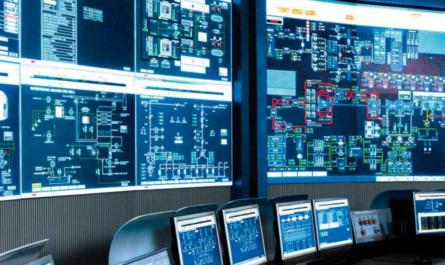The Rise of the Drone-In-A-Box
Over the past decade, drones have become increasingly popular for both commercial and recreational uses. However, traditional drones can be complicated to fly and require assembly. A new type of drone called the “drone-in-a-box” aims to change that by providing a fully assembled, easy to fly drone right out of the box.
What is a Drone-In-A-Box?
It is a pre-built miniature Drone In A Box that is portable, easy to fly, and requires no assembly. Everything a user needs, including the drone, controller, and charger, comes packaged together in a compact carrying case or box-style packaging. There are no loose parts to assemble. The user simply takes the drone out, charges it, and can immediately start flying without any complex setup or calibration.
This all-in-one design offers several key benefits over traditional drones:
Plug-and-Play Simplicity – They are designed for instant setup and use with no assembly or calibration required. Users can be flying within minutes of opening the box. This lowered the barrier of entry and makes drones more accessible.
Portability – The compact package means they can easily be transported and flown anywhere. The components all fit neatly back into the storage box for travelling.
Easy to Learn – With no assembly or complex setup, they are focused on being intuitive and simple to fly straight out of the box. This makes them great for beginners or casual users who just want an easy flying experience.
Affordability – By streamlining the manufacturing and packaging into an integrated system, they can offer comparable or better functionality at lower price points than traditional DIY drones.
The future promises even long flight times, autonomous abilities, and other cutting edge features all integrated into an even more user-friendly Drone In A Box formula.
Growing Commercial Applications
While drones have long been used by professional filming/photography, their commercial potential is continuing to expand as drone-in-a-box technology progresses:
Inspection – Power, gas and telecom companies use drones to safely inspect infrastructure like cell towers, power lines and pipelines without needing to send workers into hazardous areas. Construction firms also use drones to monitor progress.
Agriculture – Farmers deploy drones to monitor crops and livestock, detect issues, and efficiently map fields. Some can even spray fertilizers/pesticides autonomously. Yield monitoring helps maximize profits.
Delivery – Several companies are testing medical supply and package delivery using drones. Regulations permitting, drone logistics could revolutionize on-demand delivery services.
Surveying – Drones equipped with cameras and LIDAR helps surveyors, engineers and GIS professionals quickly capture aerial imagery, point clouds and elevation data of sites.
Public Safety – Search and rescue teams utilize drones with infrared cameras, loudspeakers and rescue supply drops. Police also deploy drones for surveillance, fire response and assessing hazardous situations from above.
As the technology continues to improve performance while minimizing complexity, commercial drone usage is poised for tremendous growth worldwide across many established and emerging industries. They eliminate previous entry barriers and open up new commercial applications not possible before.
Of course, drones have also captured the imagination of general consumers and hobbyists looking for an aerial perspective and fun new flying experience. The drone-in-a-box concept has significantly grown these by making drones more accessible than ever before.
While professional cinematographers continue using high-end custom drones, casual users appreciate the ability to pick up and fly a basic drone-in-a-box immediately. Having the entire setup contained compactly in one package means they can be easily shared among family and friends of all ages. Flying skills are obtained without requiring extensive technical expertise.
Vloggers and social media personalities have also embraced drones as a new angle to capture memorable moments and beautiful scenery shots. Drone selfies and choreography have become an artistic popular genre among aerial videographers. Many explore their local neighborhoods, parks and landscapes from a bird’s eye view.
Flying clubs and leagues are sprouting worldwide as a new hobby and sport involving drone racing, aerial obstacle courses, videography competitions and more. Events attract huge crowds similar to traditional radio control hobbies. Drone simulators are also available for practicing flying skills indoors anytime.
*Note:
1. Source: Coherent Market Insights, Public sources, Desk research
2. We have leveraged AI tools to mine information and compile it



